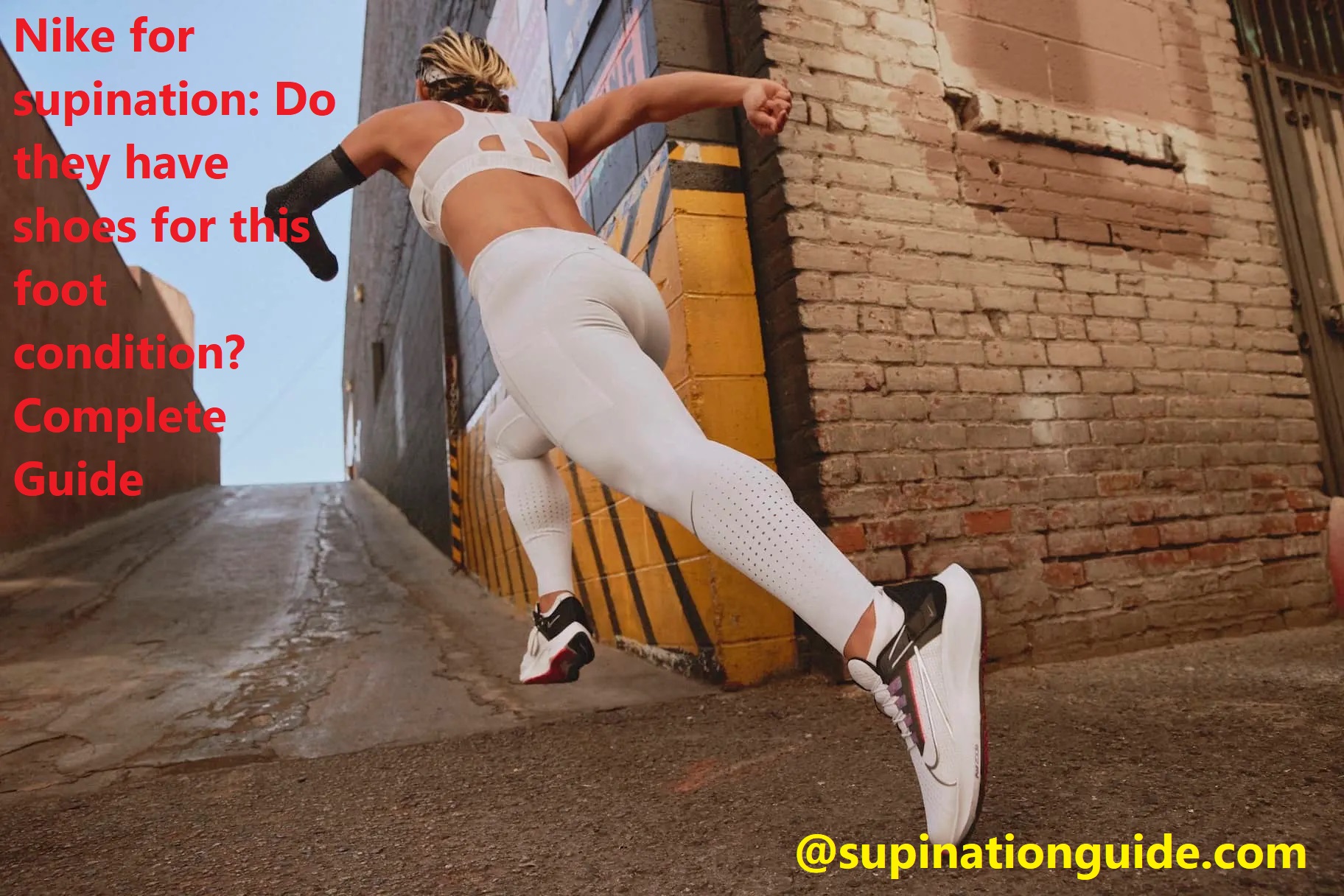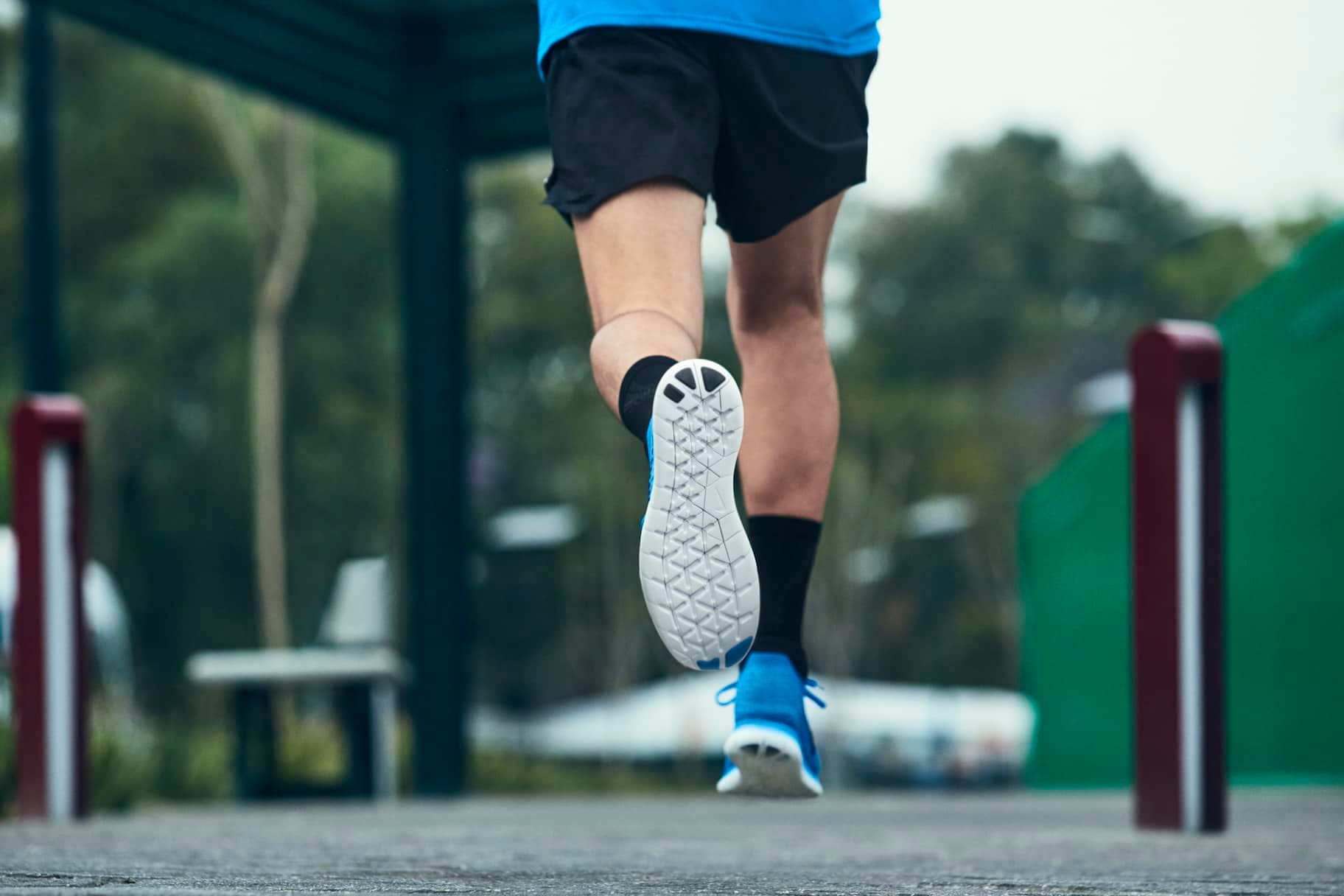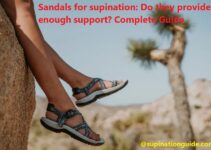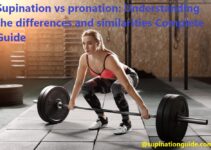Looking for a shoe that can alleviate your supination? If so, you’re in luck -Nike offers a wide range of shoes specifically designed to fit the needs of those with this foot condition.
This guide will provide you with everything you need to know about what Nike has to offer and which shoes are best suited for supination.
Welcome to our guide on Nike shoes for supination. Nike has become a world-renowned leader in the footwear industry, offering an impressive selection of sneakers and other styles of shoes for every kind of athlete. But does this leader in the shoe industry offer anything for people with supinated feet – feet with a tendency to turn outward – who need extra cushioning and stability?
In this guide, we’ll examine the types of shoes Nike offers for people with supinate feet, as well as the benefits that come along with wearing these shoes. We’ll also take a look at the different features and technologies that these shoes contain in order to provide comfort while helping to prevent or minimize foot pain or injury caused by walking or running on hard surfaces. Finally, we’ll address how to determine whether you have supination and which type of Nike shoe is best suited for your foot structure and activity level.
Understanding Supination
When an individual supinates, or has a high arch, the weight on their foot is distributed away from the arch and along the outside edge of the foot. The bones in the ankle may turn outward, creating an outwardly rotated leg. This causes tension in muscles and can lead to problems like chronic ankle instability, heel spurs, plantar fasciitis and other issues that can limit mobility.
Supination can occur due to a number of things like flat feet, weak ankles or even tight calf muscles. Most people who experience this condition struggle when running or participating in many physical activities as their feet lose contact with the ground while they move. Individuals with this condition often require extra cushioning with shock absorption to help minimize stress on their ankles and other joints.
The right shoes are key for individuals who experience supination— shoes that provide plenty of cushioning with shock absorption will help keep them comfortable and reduce pain during activities. Many companies make shoes specifically designed for this condition including Nike, Asics and Saucony among others – these brands provide excellent arch support along with plenty of cushioning which helps reduce fatigue during strenuous activities.

Definition and Causes
Supination is a condition in which the foot rolls outward as it moves from heel strike to toe-off. It occurs when the body shifts too far toward the outer edge of the foot and away from its arch and midfoot area, resulting in impact forces being directed away from these key parts of the support system. This can cause pain, fatigue, and even injury to other parts of the body if not addressed correctly.
Potential causes include weak muscles throughout the legs and feet, improper shoe selection, ill-fitting shoes, and overpronation (the inward rolling of the foot upon contact with the ground). To provide adequate cushioning and support, it’s important to find a comfortable pair of shoes that are designed to help address issues related to supination.
Symptoms
The main symptom of supination is a feeling of instability when you are walking or running. As you put pressure on your feet, the outside edges may feel like they could buckle. People often describe this feeling as having a “rolling” sensation on the outer sides of the feet that can cause pain and discomfort with long-term use, especially if proper precautions are not taken.
Other symptoms include:
- Pain in the heel or ankle after running or physical activity
- An inability to keep balance when running
- Tiredness and discomfort in your leg muscles
- Irritation of the outer side of your ankle or foot due to increased friction
- Increased risk of developing plantar fasciitis, an inflammation of the ligaments running across your sole that can cause pain with movement
Importance of proper footwear for supination
When it comes to supination, wearing the correct type of shoes is especially important. This is because the pressure placed on the feet when walking can cause further misalignment of the body, leading to more pain and increased risk of injury over time.
Nike has a wide range of shoes designed specifically for people with supination, offering cushioning and stability that is necessary to prevent further misalignment and discomfort. The products provide better support, arch control, as well as shock absorption which are imperatives if you want to effectively reduce pronation related injuries.
It is recommended that people choose a shoe size 1/2 larger than their normal size in order to ensure a comfortable fit. Additionally, Nike offers inserts that help absorb shock, cushioning the foot and reducing excessive strain on the ankle joints – this helps in managing pain from supinated feet in addition to providing stability and alignment.
In summary, it is essential for all people with supinated feet (or those prone to supination) to use proper footwear in order to avoid injuries or further complications from existing conditions – Nike’s range of shoes are perfect for this purpose!
Nike Shoe Technology
Nike has developed a variety of shoe technologies designed to cushion and support the foot, reduce pain and prevent injury. Nike’s “Air” technology was designed to provide superior cushioning and shock absorption by using pressurized air pockets in the sole of the shoe.
Nike’s “React” technology is a lightweight foam cushioning system that absorbs impact, giving the runner a more comfortable, responsive feel.
Nike has also developed Flywire technology for superior foot stability, which selects thin strands of polyester fibers that are strong enough to support your foot as it twists during supination, yet still flexible enough to remain comfortable even on long runs.
Overview of Nike shoe technology
Nike offers a variety of shoe options for people with supination with various levels of support and cushioning. Shoes should be matched to the individual’s specific needs and level of activity. Generally, Nike shoes for people with supination have certain features in common.
One such feature is the outsole tread—which helps provides grip on uneven surfaces, especially when running outdoors on trails and off-road terrain. The outsoles are also designed to track along a straight line, perfect for correcting misalignment issues caused by pronation or supination while walking or running. They also feature foam cushioning that offers shock absorption to reduce foot strike pain and midsole cushioning caps that help protect against painful heel strikes on pavement surfaces, especially when running longer distances. Additionally, arch support ensures proper foot alignment when facing sudden changes in direction while playing sports or running errands around town.
Furthermore, uppers made from breathable materials such as mesh minimize heat buildup even during vigorous physical activity such as sports and long runs. These shoes are designed to move along with your feet for natural fit and comfort; in most cases there are reflective components added for visibility if walking or running at night becomes necessary. Lastly, almost all of Nike’s shoes meant for people with pronation or supination feature the company’s acclaimed Motion Technology system—a set of integrated flex grooves instead of traditional circular traction patterns—mimicking the natural movement of your foot resulting in not just stability but optimum performance as well along with improved agility.
How Nike shoes can help with supination
Supination, or under-pronation, occurs when the foot rolls too far outward when taking a stride. Taking steps with a supinated foot can be uncomfortable and cause other problems such as arch pain and blisters. Luckily, Nike offers several features to help provide relief for this foot condition.
By employing both cushioning and support, Nike shoes help to reduce the strain on the feet while walking or running. The brand even provides dedicated stability shoes that can help aid with this issue, ensuring greater comfort and preventing any further injury due to supination.
Nike’s patented support technology can also play an important role in providing relief for supination. By encouraging the foot to pronate correctly, these systems greatly reduce the stress presented by abnormal movement patterns of the feet.
Additionally, some of Nike’s traction features offer enough grip on surfaces to ensure that you don’t slip or skid while running or walking— something which is critical if you want to prevent further injuries due to your condition. All in all, Nike has dedicated itself to creating shoes that provide relief from this unpleasant condition without sacrificing any of its signature style or comfort just as they have done with their other specialized range of shoes such as running models designed specifically for long distance runners’ needs.
Nike Shoe Selection Guide for Supination
If you are looking for Nike shoes to treat supination, there are a few models available. The first step in finding the perfect pair of Nike shoes for your condition is to understand the different categories of Nike shoes and what their specific uses are. This guide will help you choose the best shoe for every situation:
- Neutral Running Shoes: Neutral running shoes feature a seamlessly balanced cushioning solution with an expanded forefoot structure to promote natural foot motion during each stride. These shoes provide stability when needed, but have a more flexible feel; perfect for those who have light tongue movement due to their lower height and lighter midsole foam. This type of shoe is recommended for those with mild-moderate overpronation/supination. Examples include the Nike React Infinity Run Flyknit 2, Pegasus37Turbo2Shield, and Vomero14 Shield models.
- Stability Running Shoes: Stability running shoes include an inclined platform designed to deliver increased support on the medial (inside) aspect of your foot while maintaining flexibility in other parts of the shoe where you need it most. Many stability running shoes also feature an internal heel counter molded into their midsole which creates a secure fit along with additional support and cushioning underfoot – ideal for mild overpronators/supinators who require mild levels of off-center stability as they walk or run at faster speeds on hard surfaces. The Foundation3 series, Structure21 Omni and RenewRivalShield model are popular examples of this category.
3a. Motion Control Running Shoes: If your feet tend to roll too far inward due to overpronation or supination, then motion control running shoes will likely be your go-to choice since they’re specifically designed to control abnormal pronation/supination mechanics for smoother movements throughout each stride and reduce extra strain across your lower leg muscles during exercise or daily activities. Popular examples from Nike include features such as wide bases in the heel and forefoot regions that offer increased stability via a locked down fit plus an extended medial section which shuts out any excessive inward rolling tendencies. Reasonable choices include designs like OdysseyReact2Flyknit1X VPShield or OdysseyBounce ViceVPshield versions depending on whether you lean towards more lightweight or moderate cushioning solutions respectively.
3b Cushioned Running Shoes: Cushioned running shoes provide maximum protection against impact forces while lessening muscular fatigue around your joints through contoured layers made from foams that disperse vertical force when striking terrain beneath them – eases discomfort on both long trails and shorter runs alike while also providing responsive energy return in each step taken too! Popular offerings manufactured by Nike here include versions like Vivenges 3Max Air or LunarepicFlyknit Shield designs featuring targeted upper overlays where necessary as well as sturdy outsole rubber compounds that increases traction yet remain light enough not interfere with fast transition speeds nor unexpected turns at speed either!

Identifying your foot type
The medical term for supination is underpronation, which means the foot rolls outward during movement. This causes a lack of flexibility in the foot that can lead to injuries due to overcompensation when walking, running or engaging in other physical activities. When it comes to choosing the right running shoe for your need, it’s important to properly identify your foot type.
An easy way to figure out if you have a supinated gait is to spend some time watching yourself walk from behind. If your feet roll and slant outward, you most likely supinate. If you place wet footprints on a towel and notice that more of your heel and outside area are printed than your inside edge and arch area, then this confirms you have an underpronated (supinated) gait pattern.
Another way to tell if you are underpronators is by looking at past athletic shoes—if their wear patterns show more wear on their outside edges than inner edges, then this confirms you have a supinated gait pattern also. Polyhedral feet can also provide clues; feet that are longer and thinner with high arches typically indicate a high level of pronation or underpronation when standing barefoot or while being measured up for shoes in store.
How to select the correct Nike shoe for supination
When selecting a Nike shoe to meet the needs of an individual with supination (under pronation), there are several features that should be considered. The individual should look for shoes that have a high-quality cushioning system, along with plenty of arch support and stability.
The best solution for people with supination is the Nike React Infinity Run 2. This shoe boasts of having a combination of soft cushioning and firm support, giving runners who weigh a lot or greatly impact their feet when running the most protection from injury. It also has plenty of arch protection as well as stif le material in the sole for good stability and lateral support.
Other great shoes for supinated feet are:
- Nike Air Zoom Structure 22 Running Shoe: Featuring plenty of cushioned foam, this shoe also has upgraded technology that provides extra structure to help alleviate pronation without compromising flexibility or motion control.
- Nike Air Zoom Pegasus 36 Running Shoe: This lightweight running shoe features full-length Zoom Air units on both sides, providing superior cushioning and responsiveness during workouts. It also includes additional arch reinforcements when you need an extra boost in support in areas where pronation occurs more frequently.
- Nike Odyssey React 2 Shield Shoes: This hybrid running and lifestyle sneaker ensures superior padding even during longer runs thanks to react foam cushioning at both the forefoot and heel area as well as larger areas at the sides that provide further stability against foot movement while running or walking, ideal for those prone to twisting their ankles due to supination.
Considerations when choosing a Nike shoe
When choosing a Nike shoe for supination, there are several features to consider in order to get the best fit and comfort. Look for shoes that provide cushioning in the midsole, sufficient arch support, and some degree of flexibility for greater foot movement. Additionally, make sure that the shoes have enough room in the toes and avoid any bulky or restrictive designs on the upper part of the shoe.
Keep in mind that many Nike shoes designed specifically for running or working out are designed to be responsive and lightweight rather than supportive. If you are looking for a more supportive option, prioritize function over form; extra cushioning or arch support can actually improve performance while helping to reduce stress on the feet.
Moreover, based on your foot shape and size, you may want to go half a size smaller with your Nike shoes than your regular size so that they fit snugly on your feet, but not too tightly where they greatly reduce your range of motion. Consult store personnel if you can’t decide which size is best for you before making a purchase.
Conclusion
In conclusion, Nike has a wide variety of shoes that can meet the needs of people with supination. With technology such as Flywire and Flyknit, Nike has created special shoes that provide extra foot support and help with cushioning, which are features that are essential to helping give relief to people who suffer from supination.
Additionally, many customers have reported satisfactory results after wearing Nike shoes while dealing with supination. Nike has also combined fashionable design elements into many of their shoe models specifically created for those who suffer from this condition, making them more attractive than other corrective options available on the market.
Therefore, if you’re looking for a stylish corrective option to comfortably walk around with during your everyday routine and help deliver relief from your over-pronation symptoms, then a pair of Nike shoes may be exactly what you need!

FAQ’s
What brand of shoes are best for supination?
There is no one brand that is universally considered the best for supination. It is important to look for shoes with good cushioning and support, as well as a design that promotes a natural gait.
Do you need special shoes for supination?
People with supination may benefit from shoes with certain features, such as good cushioning and support, but they do not necessarily need to be special shoes designed specifically for supination.
Can supinators wear stability shoes?
Yes, stability shoes can be a good option for supinators as they provide extra support and control to help prevent the foot from rolling outward.
What is supination of foot shoe wear?
Supination of foot shoe wear refers to shoes that are designed to help correct or accommodate for supination. These shoes may have features such as extra cushioning and support on the outer edge of the foot.
What is the best way to correct supination of foot?
Correcting supination often involves a combination of exercises to strengthen the muscles of the foot and ankle, as well as wearing appropriate shoes with good support and cushioning. A physical therapist can help develop a personalized plan for correction.
What are the problems with supination?
Supination can lead to a variety of foot problems, including ankle sprains, stress fractures, and plantar fasciitis. It can also contribute to knee and hip pain by altering the alignment of the leg.
Is supination permanent?
Supination is not necessarily permanent and can often be corrected with proper treatment and care.
Is supination painful?
Supination itself may not be painful, but it can contribute to foot, knee, or hip pain due to the altered alignment and increased stress on certain areas of the body.
Is supination common?
Supination is less common than pronation, but it still affects a significant number of people. It is estimated that about supination affects around 10-15% of the population.
What muscles are weak with supination?
Supination is often associated with weakness in the muscles of the foot and ankle, particularly the tibialis posterior muscle which helps to support the arch of the foot.
See Also :
- Best athletic shoes for supination
- Best brooks shoes for supination
- Best hiking shoes for supination
- Best hoka shoes for supination
- Best insoles for supination


